1783 - 2007 Aviation Timeline
Hi im a great fan of the wright brothers and love there kitty hawk plane
Here i have done sort of like a timeline of the worlds known planes
I know i have prop left some planes out cos like i don't know every plane in the world so if you have a plane witch is not on here please post it.
-------------------------------------------------------------------------------------------------------------------------------------------------------------------------------
The Montgolfier brothers, born in Annonay, France, were the inventors of the first practical balloon. The first demonstrated flight of a hot air balloon took place on June 4, 1783, in Annonay, France.
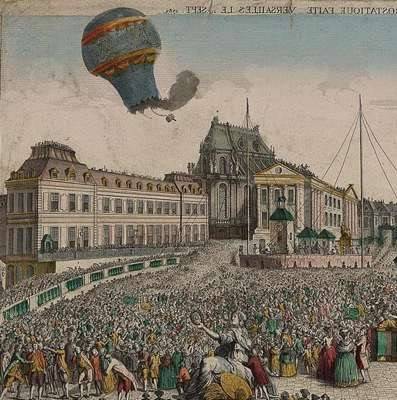
Sir George Cayley, born in 1773, is sometimes called the of Father of Aviation. A pioneer in his field, he is credited with the first major breakthrough in heavier-than-air flight.
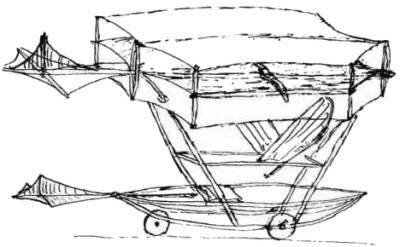
12 November 1903 The Lebaudy brothers fly their airship between
Moison and Champ-de-Mars, a distance of 60 kilometres (37 miles).

Wright Brothers
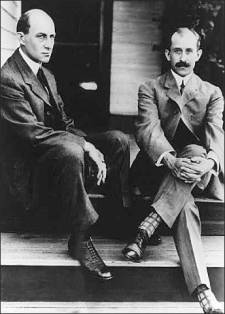
17 November 1903 At 1035hrs at Kill Devil Hills in Kitty Hawk, North Carolina, Orville Wright pilots the Wright Flyer on a 36.5 metre (120 feet) flight lasting 12 seconds.
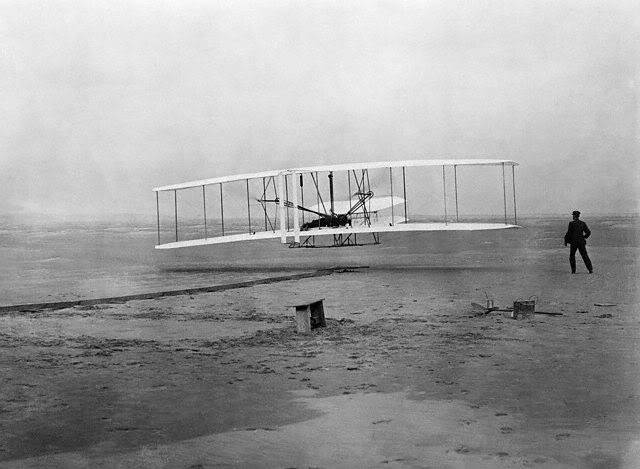
26 October 1907 Henry Farman sets the official distance record of 771 metres (2,530 feet) in a Voisin-Farman I.
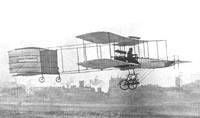
25 July 1909 A Frenchman, Louis Blériot, becomes the first man to fly across the English Channel by aeroplane. Flying his Blériot Type XI he takes off from Les Baraques near Calais at 0441hrs and lands at Northfall Meadow next to Dover Castle 36½ minutes later. Blériot wins the Daily Mail £1,000 prize.
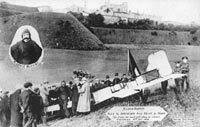
Year's of service: 1911 - 1918
Manfred Albrecht Freiherr von Richthofen (2 May 1892 - 21 April 191😎 was a German fighter pilot known as "The Red Baron". He was the most successful flying ace of World War I, and was credited with 80 confirmed air combat victories.
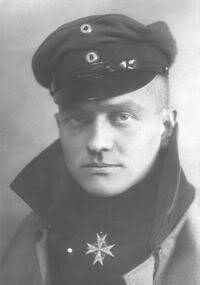

19 - 20 January 1915 Two German Navy Zeppelins, LZ24 (L3) and LZ27 (L4), make the first airship raid on Great Britain and a third, LZ31 (L6), returns early due to engine problems.
Bombs from L3 fall on Great Yarmouth, while L4 drops incendiaries and bombs on Sheringham, Thornham, Brancaster, Hunstanton, Heacham, Snettisham and King's Lynn. Several civilians are killed and wounded.
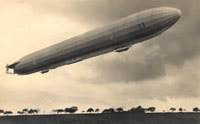
18 April 1917 In Seattle, USA, William E. Boeing's Pacific Aero Products Company becomes the Boeing Airplane Company.
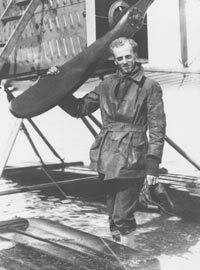
28 September 1924 The first round the world aeroplane flight is completed. Douglas World Cruisers' 'Chicago' and 'New Orleans' arrive back at Seattle. With an actual flying time of 371 hours 11 minutes, the flight required 57 stops.
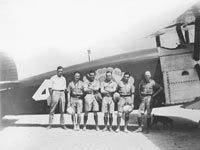
German hydrogen-filled airship, the 'Hindenburg', is destroyed by fire whilst docking at Lakehurst in
New Jersey. 33 of the 97 people on board are killed.
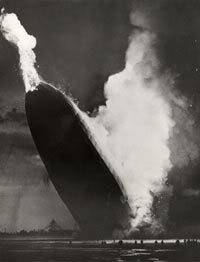
20 May 1927:
The Spirit of St. Louis is a custom-built airplane flown by Charles Lindbergh that made the first non-stop solo trans-Atlantic flight on 20 May and 21 May 1927. This was also the first non-stop flight from New York to Paris, for which Lindbergh won the $25,000 Orteig Prize.
Lindbergh took off from Roosevelt Airfield in Long Island, New York and made a successful touchdown at the Le Bourget Aerodrome in Paris, France. The flight lasted 33 hours, 30 minutes and 29.8 seconds. Lindbergh was the 104th person to fly the Atlantic.
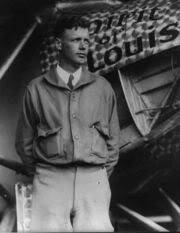
The Douglas DC-3 is a fixed-wing, propeller-driven aircraft whose speed and range revolutionized air transport in the 1930s and 1940s. Because of its lasting impact on the airline industry and World War II, it is generally regarded as one of the most significant transport aircraft ever made.

The Douglas C-47 Skytrain or Dakota is a military transport that was developed from the Douglas DC-3 airliner. It was used extensively by the Allies during World War II and remained in front line operations through the 1950's with a few remaining in operation to this day.
During World War II, the armed forces of many countries used the C-47 and modified DC-3s for the transport of troops, cargo and wounded. Over 10,000 aircraft were produced in Long Beach and Santa Monica, California and Oklahoma City, Oklahoma.
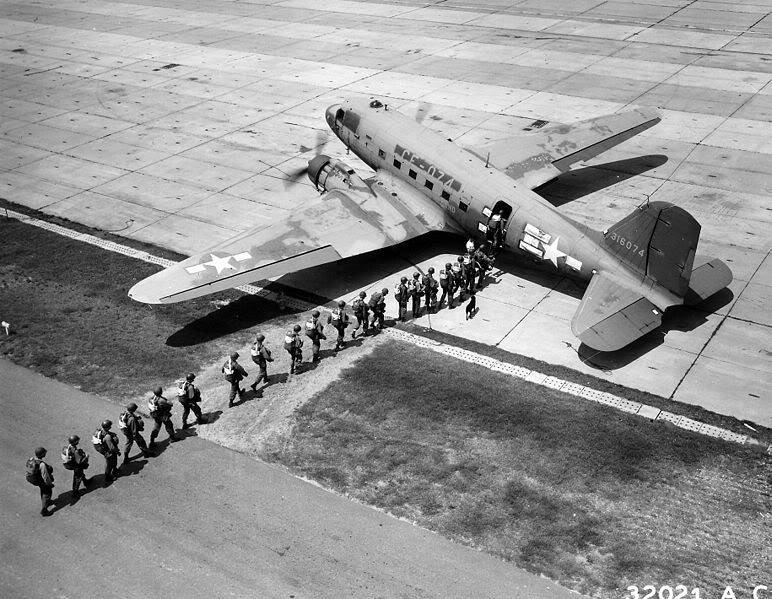
1938 - 1939
The Supermarine Spitfire entered service with the Royal Air Force some 9 months after the Hawker Hurricane. Being the second of the RAF's 8 gun monoplanes. 19 Squadron at Duxford exchanged its Gauntlet biplanes for the Mk 1 Spitfire starting on August 4 1938 with the arrival of K9789. The second RAF squadron to receive the Spitfire was also based at Duxford, 66 Squadron received Spitfire K9802 on 31 October 1938. By the end of 1938, the RAF had 2 fully equipped Spitfire Squadrons. When war broke out on September 3 1939, the RAF had 9 Squadrons equipped, these being 19, 66 and 611, all at Duxford; 54, 65 and 74 Squadrons based at Hornchurch; 72 Squadron based at Church Fenton; 41 and 609 Squadrons based at Catterick and 602 Squadron based at Abbotsinch. 603 Squadron were in the process of receiving Spitfires in place of its Gladiators at Turnhouse. At the outbreak of war, 306 mk1 Spitfires had been delivered and 36 of these had been destroyed in training accidents.
The North American Aviation P-51 Mustang was an American long-range single-seat fighter aircraft that entered service with Allied air forces in the middle years of World War II. The P-51 became one of the conflict's most successful and recognizable aircraft.
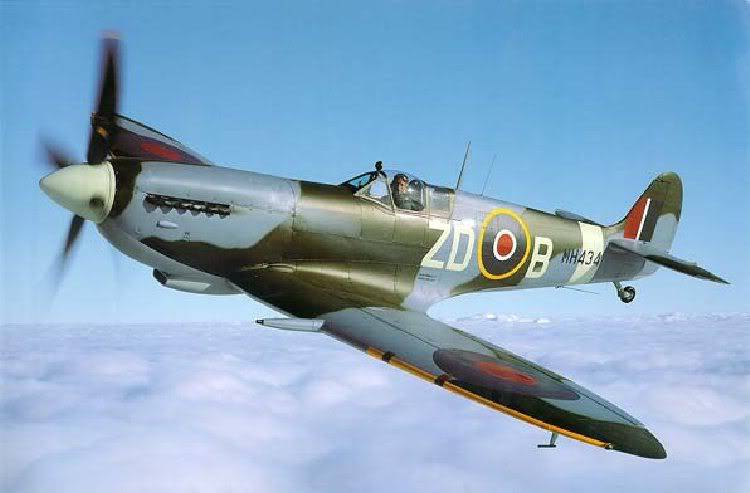
13 May 1940 The Sikorsky VS300 single rotor helicopter, which uses a small rotor at the tail to overcome main rotor torque, makes its first free flight.
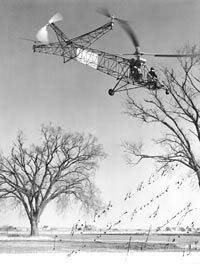
In September 1939, the Air Ministry issued a specification to Gloster for an aircraft to test one of Frank Whittle's turbojet designs in flight. Working closely with Whittle, Gloster's chief designer George Carter laid out a small low-wing aircraft of conventional configuration. The jet intake was in the nose, and the tail-fin and elevators were mounted above the jet-pipe. A contract for two prototypes was signed by the Air Ministry on 3 February 1940 and the first of these was completed by April 1941. Building started in Hucclecote near Gloucester, but was later moved to Regent Motors in Cheltenham High St (now the Regent Arcade), considered a location safer from bombing.
The E.28/39 name comes from the aircraft having been built to the 28th "Experimental" specification issued by the Air Ministry in 1939.

The North American Aviation P-51 Mustang was an American long-range single-seat fighter aircraft that entered service with Allied air forces in the middle years of World War II. The P-51 became one of the conflict's most successful and recognizable aircraft.
The P-51 flew most of its wartime missions as a bomber escort in raids over Germany, helping ensure Allied air superiority from early 1944. It also saw service against the Japanese in the Pacific War. The Mustang began the Korean War as the United Nations' main fighter, but was relegated to a ground attack role when superseded by jet fighters early in the conflict. Nevertheless, it remained in service with some air forces until the early-1980s.
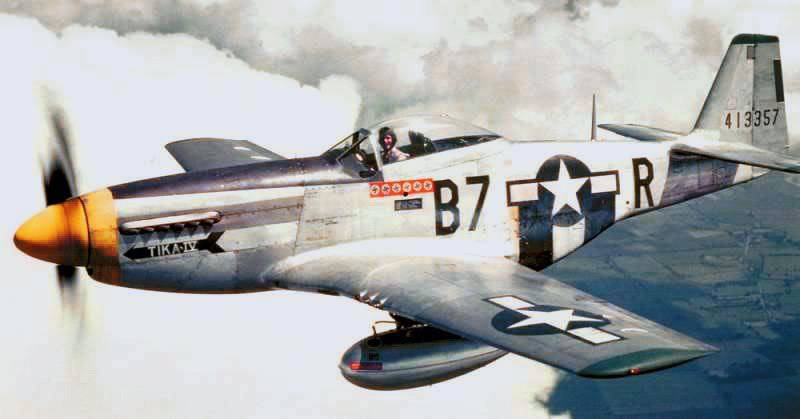
29 April 1940:
The Chance Vought F4U Corsair was an American fighter aircraft that saw service in World War II and the Korean War (and in isolated local conflicts). Goodyear-built Corsairs were designated FG and Brewster-built aircraft F3A. The Corsair served in some air forces until the 1960s, following the longest production run of any piston-engined fighter in history (1940 - 1953). During World War II, it was the fighter the Japanese feared the most. The US Navy counted the average kill-rate as for every F4U shot down, 11 enemy aircraft were shot down.[2] It had a supercharged engine, which made a whistling sound when it was in the air. The Japanese nicknamed it "Whistling Death".

19 March 1941
On 19 March 1941, the 99th Pursuit Squadron (Pursuit being the pre-World War II descriptive for "Fighter") was activated at Chanute Field in Rantoul, Illinois.[2] Over 250 enlisted men were trained at Chanute in aircraft ground support trades. This small number of enlisted men was to become the core of other black squadrons forming at Tuskegee and Maxwell fields in Alabama.


8 April 1941:
The Messerschmitt Me 262 Schwalbe (German: "Swallow") was the world's first operational turbojet fighter aircraft. It was produced in World War II and saw action starting in 1944 as a multi-role fighter/bomber/reconnaissance/interceptor warplane for the Luftwaffe. It was officially named Schwalbe because the swallow, when in a dive, is one of the fastest birds known. German pilots nicknamed it the "Turbo," while the Allies called it the "Stormbird." While the Me 262 had a negligible impact on the course of the war, with 509 claimed Allied kills[2], (although higher claims are sometimes made[3]) for more than 100 Me 262 losses, its design had a strong influence on postwar aircraft development.
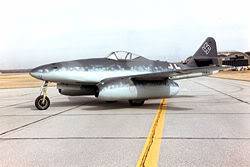
26 June 1942:
The Grumman F6F Hellcat was a fighter plane descended from the earlier F4F Wildcat, but was a completely new design sharing only a familial resemblance to the Wildcat. Some tagged it as "Wildcat's big brother" [1]. The Hellcat and the Vought F4U Corsair were the primary United States Navy carrier fighters in the second half of World War II.

The Hellcat proved to be the most successful aircraft in naval history, destroying 5,171 aircraft in service with the US Navy and US Marine Corps (5,163 in the Pacific and 8 more during the invasion of Southern France), plus 52 with the Royal Navy's Fleet Air Arm during World War II. Postwar, the Hellcat aircraft was rapidly phased out of front line service, finally retiring in 1954 as a night-fighter in composite squadrons.
1944:
Enola Gay is the B-29 Superfortress bomber that dropped "Little Boy", the first atomic bomb ever used in war, when the United States Army Air Forces (USAAF) attacked Hiroshima, Japan on August 6, 1945, just before the end of World War II. Because of its roles in the atomic bombings of Japan, its name has been synonymous with the bombings themselves. It was named after Enola Gay Tibbets, the mother of the pilot.
Enola Gay gained additional national attention in 1994 when the front portion of the plane was exhibited at the National Air and Space Museum (NASM) of the Smithsonian Institution in downtown Washington DC. The exhibit was changed due to a controversy over original historical script displayed with the plane. In 2003, the entire restored B-29 Enola Gay went on display at NASM's new Steven F. Udvar-Hazy Center.
8 March 1946 The Bell Model 47 is granted the first commercial helicopter certificate to be awarded by the United States Civil Aviation Authority.
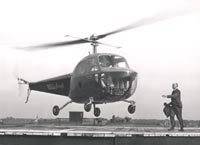
1 June 1946 A Pan American World Airways (Pan-Am) Constellation lands at London Heathrow on the Airline's first scheduled New York to London service.
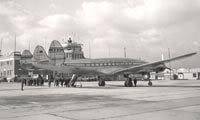
The first production aircraft (G-ALYP) flew in January 1951. On 22 January 1952 G-ALYS was the first Comet to receive a certificate of airworthiness. On 2 May 1952 G-ALYP took off on the world's first all-jet flight with fare-paying passengers, beginning scheduled service to Johannesburg. The last plane from the initial order (G-ALYZ) began flying in September 1952, carrying freight along South American routes while simulating passenger schedules.
The Comet was a hit with passengers and commercial success was widely anticipated. Queen Elizabeth the Queen Mother was an early passenger on a special flight, becoming the first member of the British Royal Family to fly by jet. The Comet flew about 50% faster than advanced piston-engined types like the Douglas DC-6 (490 mph for the Comet compared to 315 mph for the DC-6B). The Comet's rate of climb was also far higher, which could cut flight times in half. The Ghost engine was smooth, relatively simple, fuel-efficient above 30,000 ft, had low maintenance costs, little vibration and could fly above weather which the competition had to fly through. 30,000 passengers were carried during the first year of service and over 50 Comets were ordered.
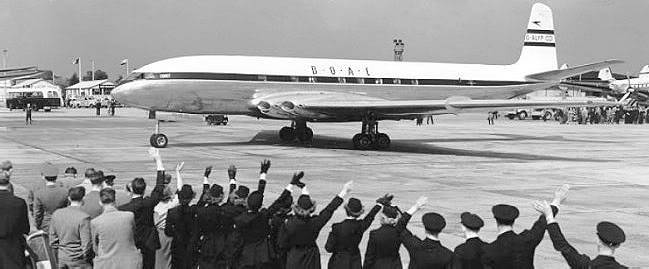
On 10 January 1954, BOAC Flight 781 a de Havilland Comet 1 (type DH-106), took off from Ciampino Airport in Rome, Italy en route to Heathrow Airport in London, England on the final leg of its flight from Singapore. At about 10:00 GMT, the aircraft suffered an explosive decompression at altitude and crashed into the Mediterranean Sea, killing everyone on board.
It is because of the comet crash that now all aircraft's must have round windows you fink the people on this plane who suffered on this crash and there wasnt just one there were 2 or even 3 i dunno but all it was is that thay didnt make the windows round.
15 - 31 July 1952 The first helicopter crossing of the North Atlantic is made by by Captain Vincent H. McGovern and Lieutenant Harold Moore, flying Sikorsky S55 helicopters from Massachusetts to Ayrshire in 42 hours 25 minutes.
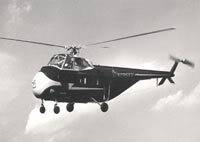
31 August 1952
The Avro Vulcan was a British delta wing subsonic bomber, operated by the Royal Air Force from 1953 until 1984. The Vulcan was part of the RAF's V bomber force, which fulfilled the role of nuclear deterrence against the Soviet Union during the Cold War. It was also used in a conventional bombing role during the Falklands conflict with Argentina. Only one example of the type remains in flying condition.
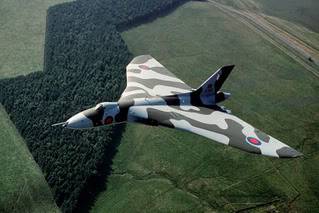
28 August 1957 A new world altitude record of 21,430 metres (70,308 feet) is set by M. Randrup flying an English Electric Canberra.
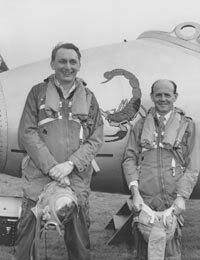
The Boeing 707 is an American four-engine commercial passenger jet airliner developed by Boeing in the early 1950s. Its name is most commonly spoken as "Seven Oh Seven". Boeing delivered a total of 1,010 Boeing 707s, which dominated passenger air transport in the 1960s and remained common through the 1970s. As of October 2006, 68 Boeing 707 aircraft (of any variant) were reported to be remaining in airline service, with just two airlines flying passengers, Saha Airlines of Iran and LADE Airlines of Argentina.[citation needed] Boeing also offered a smaller, faster version of the aircraft that was marketed as the Boeing 720.
Although it was not the first commercial jet in service (that distinction belongs to the De Havilland Comet), the 707 was the first to be commercially successful, and is credited as ushering in the Jet Age. It established Boeing as one of the largest makers of passenger aircraft, and led to the later series of aircraft with "7x7" designations.

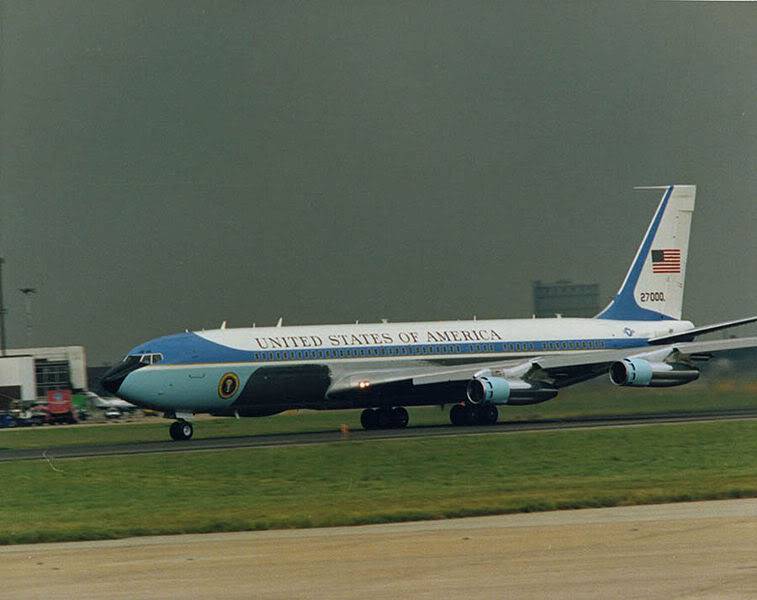
10 February 1968:
The Boeing 737 is an American short to medium range, single aisle, narrow body jet airliner. With over 7,000 ordered and over 5,000 delivered, it is the most ordered and produced commercial passenger jet of all time and has been continuously manufactured by Boeing since 1967. The 737 is now so widely used that at any given time, there are over 1,250 airborne worldwide.[2] On average, somewhere around the world, a 737 takes off or lands every five seconds.
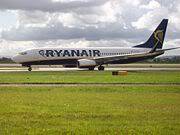
31 December 1968 A prototype Tupolev Tu144 Super Sonic Transport (SST) makes its first flight and the Soviets become the first nation to fly a supersonic transport aircraft.
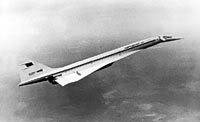
1969:
The Harrier Jump Jet, often referred to as just "Harrier" or "the Jump Jet", is a military jet aircraft capable of Vertical/Short Takeoff and Landing (V/STOL) via thrust vectoring. The Harrier family is the only truly successful design of this type from the many that arose in the 1960s.
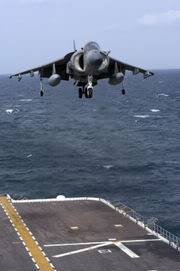
1969:
TOPGUN is the popular name of the United States Navy Strike Fighter Tactics Instructor (SFTI) program. SFTI is the modern-day evolution of the United States Navy Fighter Weapons School and carries out the same specialized fighter training as NFWS had from 1969 until 1996, when it was merged into the Naval Strike and Air Warfare Center at NAS Fallon, Nevada.
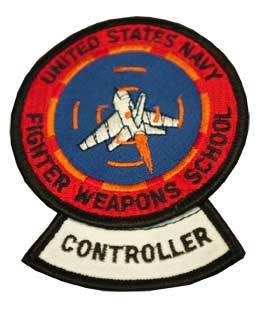
16 - 24 July 1969 NASA's Apollo 11, crewed by Neil A. Armstrong, Edwin E.A. 'Buzz' Aldrin and Michael Collins, is launched to the Moon and on 21 July Neil Armstrong becomes the first man to set foot on the Moon.
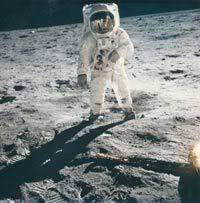
21 January 1970 The first scheduled service of the wide-bodied Boeing 747 flies from New York to London, heralding a new era of mass international air travel.
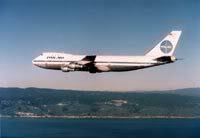
6 September 1970 Three airliners, a British Overseas Aircraft Corporation (BOAC) VC10, a TWA Boeing 707 and a Swissair DC8 are hijacked by Palestinian Terrorists and flown to Dawson's Field in Jordan. A fourth aircraft, a Pan-Am Boeing 747 is flown to Cairo.
12 September 1970 The three airliners hijacked on the 6 September are blown up by Palestinian Terrorists after they release most of the 255 passengers. The Pan American World Airways (Pan-Am) 747 is blown up after all aboard have been freed. These incidents highlight the vulnerability of international air travel as a terrorist target.

23 December 1970
The Grumman F-14 Tomcat is a supersonic, twin-engine, two-seat, variable geometry wing aircraft. The F-14 was the United States Navy's primary maritime air superiority fighter, fleet defense interceptor and tactical reconnaissance platform from 1974 to 2006. It later performed precision strike missions once it was integrated with LANTIRN.[2] It was developed after the collapse of the F-111B project, and was the first of the American teen-series fighters which were designed incorporating the experience of air combat in Vietnam against MiGs.
It entered service in 1972 with the U.S. Navy, replacing the F-4 Phantom II. It was later exported to the Imperial Iranian Air Force in 1976. It was retired from the U.S. Navy fleet on 22 September 2006, having been replaced by the F/A-18E/F Super Hornet.[3] As of 2007, it remains in service only with the Islamic Republic of Iran Air Force.

17 April 1971 A new air freight service is founded - Federal Express guarantees overnight delivery anywhere in the USA.
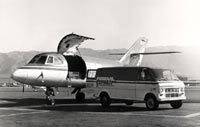
28 October 1972:
The Airbus A300 is a short to medium range widebody aircraft. Launched in 1972, it was the first twin-engined widebody in the world, and the first aircraft created by the Airbus consortium of European aerospace companies, which is now fully owned by EADS. The A300 (along with the A310) ceased production in July 2007. Freighter sales which the A300 competed for are to be fulfilled by a new A330-200F derivative.
26 December 1972 As part of Operation Linebacker II, a concentrated offensive ordered by President Nixon on December 18th, a force of 117 United States Air Force (USAF) Boeing B52 Stratofortress bombers attack Hanoi in the largest raid of the Vietnam war to date.
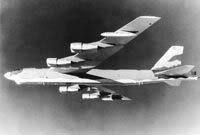
1 September 1974 A Lockheed SR71 Blackbird, flown by Major James V. Sullivan and Major Noel F. Widdifield, flies from Beale Air Force Base in California to Farnborough, a recorded distance of 3,490 miles in 1 hour 55 minutes 42 seconds.

The Aérospatiale-BAC Concorde supersonic transport (SST) was the more successful of the only two supersonic passenger airliners to have ever operated commercially (the Tupolev Tu-144 being the other).
The development programme was a product of an Anglo-French government treaty, with only 20 aircraft built. The costly development phase thus represented a substantial economic loss. Air France and British Airways were subsidised to buy the aircraft by their governments, while other sales were blocked by the 1973 oil crisis and competition from the Boeing 747. Concorde made large operating profits for British Airways for much of its service life.
21 January 1976
First flown in 1969, piloted by Andre Turcat,[2] Concorde service commenced in 1976 and continued for 27 years. It flew regular transatlantic flights from London Heathrow (British Airways) and Paris Charles de Gaulle (Air France) to New York JFK and Washington Dulles, flying these routes at record speeds, in under half the time of other airliners. Concorde also set many other records, including the official F.A.I. "Westbound Around The World" and "Eastbound Around the World" world air speed records.

27 March 1977:
The Tenerife collision took place on March 27, 1977, at 17:06:56 local time (also GMT), when two Boeing 747 airliners collided at Los Rodeos (TCI) on the island of Tenerife, Canary Islands, Spain, killing 583 people. The accident has the highest number of fatalities (excluding ground fatalities) of any single accident in aviation history. It occurred as a result of an unfortunate synchronicity of a chain of events, any one of which having not transpired would have prevented the accident.
The aircraft involved were Pan American World Airways Flight 1736, named Clipper Victor, under the command of Captain Victor Grubbs, and KLM Royal Dutch Airlines Flight 4805, named Rijn (Rhine River), under the command of Captain Jacob Veldhuyzen van Zanten. KLM 4805, taking off on the only runway of the airport, crashed into the Pan Am aircraft which was taxiing in the opposite direction on the same runway.
Tenerife North Airport (TFN) (then called Los Rodeos - TCI) is situated in the northern part of Tenerife, and is now used mainly for flights within the Canary Islands and flights from the Spanish mainland.

15 September 1983 The Lockheed F117A stealth fighter achieves operational status with the United States Air Force (USAF) 4450th Tactical Group.
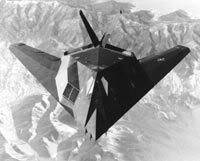
14 December 1986 The Voyager composite trimaran aircraft begins the first unrefuelled, non-stop flight around the world. Piloted by Richard G. Rutan and Jeana Yeager the flight takes 9 days 3 minutes 44 seconds and sets new world distance records for straight flight and a closed circuit course of 40,212 kilometres (24,986 miles). The aircraft carries five times its own weight in fuel on the flight, which begins and ends at Edwards Air Force Base in California.

The A340 was launched in June 1987 as a long-range complement to the short-range A320 and the medium-range A300. At the time, Airbus's twinjets were at a disadvantage against aircraft such as the Boeing 747 because of the ETOPS problem: two-engined aircraft had to stay within close range of emergency airfields to allow for engine malfunction.
The A340 was designed in parallel with the twin-engined A330: both aircraft share the same wing and similar fuselage structure, and borrow heavily from the advanced avionics developed for the A320.
Both the A330 and A340 are assembled on the same final assembly line at Toulouse-Blagnac, France. The four-engined A340 is able to fly long over-water routes. Because of its ETOPS-immunity, Virgin Atlantic Airways used the motto "4 Engines 4 Long Haul," on its A340 fleet.

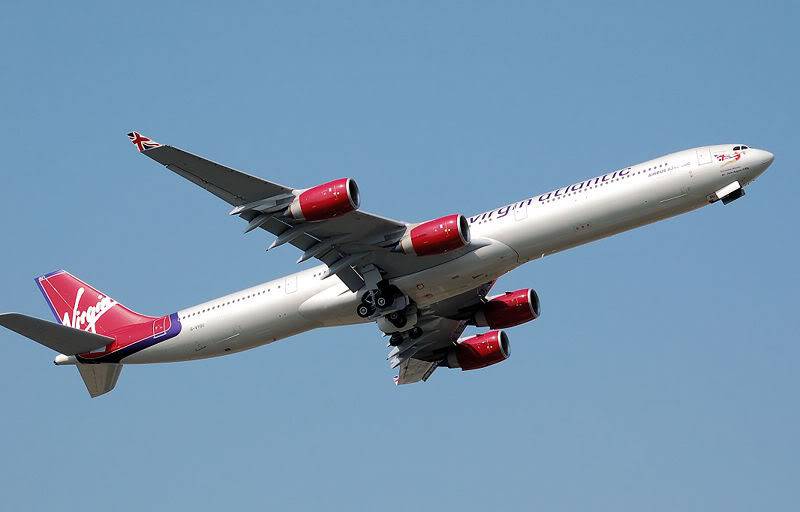
17 July 1989:
The Northrop Grumman B-2 Spirit is a multi-role stealth heavy bomber, capable of deploying both conventional and nuclear weapons. It is operated exclusively by the United States Air Force. Its development was a milestone in the modernization program of the U.S. Department of Defense. The B-2's second-generation stealth technology is intended to aid the aircraft's penetration role in order to survive extremely dense anti-aircraft defenses otherwise considered impenetrable by combat aircraft.

The Boeing 777 is an American long-range wide-body twin-engine airliner built by Boeing Commercial Airplanes. The world's largest twinjet and commonly referred to as the Triple Seven, it can carry between 301 and 368 passengers in a three-class configuration and has a range from 5,235 to 9,450 nautical miles (9,695 to 17,501 km). Distinguishing features of the 777 include the six wheels on each main landing gear, its circular fuselage cross section, the pronounced "neck" aft of the cockpit, and the blade-like tail cone.
Singapore Airlines is the largest operator of the Boeing 777 family with 68 in service. 46 are the 777-200ER variant, 12 are the 777-300s, and 10 are the 777-300ERs. Another 9 777-300ERs are on firm order with 13 more on option. As of August 2007, 50 customers have placed orders for 1,003 777s.

22 December 1997 The Eurofighter 2000 receives the go-ahead from Germany, Spain, Italy and the United Kingdom, with orders for 600 production aircraft.
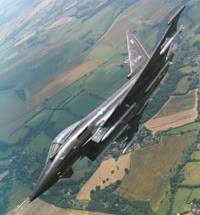
28 February 1998 The unmanned Ryan RQ4A Global Hawk flies for the first time. The aircraft is intended to replace the United States Air Force's Lockheed U2 in the high-altitude, long-range reconnaissance role.
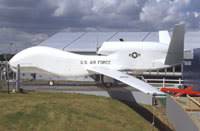
21 March 1999 Hot air balloon 'Breitling Orbiter 3' completes the first non-stop, round the world balloon flight. This sets a new distance record for any type of aircraft of 40,804 kilometres (25,360 miles).

25 July 2000 An Air France Concorde crashes onto a hotel shortly after take-off from Paris Charles de Gaulle Airport, killing 114 people, including the crew and passengers of the aircraft. It is the first crash involving Concorde. The crash is later attributed to a debris from another aircraft causing an explosive tyre puncture that ruptures a fuel tank in the wing.
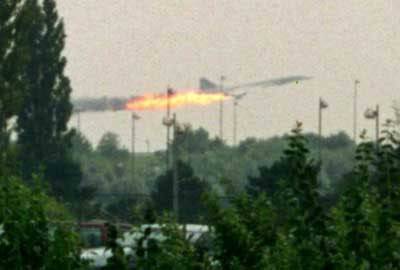
The Airbus A380 is a double-deck, four-engine airliner manufactured by the European corporation Airbus, an EADS subsidiary. The largest passenger airliner in the world, the A380 made its maiden flight on 27 April 2005 from Toulouse, France,[5] and made its first commercial flight on 25 October 2007 from Singapore to Sydney with Singapore Airlines. The aircraft was known as the Airbus A3XX during much of its development phase, but the nickname Superjumbo has since become associated with it.
The A380's upper deck extends along the entire length of the fuselage. This allows for a cabin with 50 percent more floor space than the next largest airliner, the Boeing 747-400,[6] and provides seating for 525 people in standard three-class configuration or up to 853 people in full economy class configuration.[7][8] The A380 is offered in passenger and freighter versions. The A380-800, the passenger model, is the largest passenger airliner in the world, superseding the Boeing 747. The A380-800F, the planned freighter model, is designed as one of the largest freight aircraft, with a listed payload capacity exceeded only by the Antonov An-225.[9] The A380-800 has a design range of 15,200 kilometres (8,200 nmi, sufficient to fly from New York to Hong Kong nonstop), and a cruising speed of Mach 0.85 (about 900 km/h or 560 mph at cruise altitude).
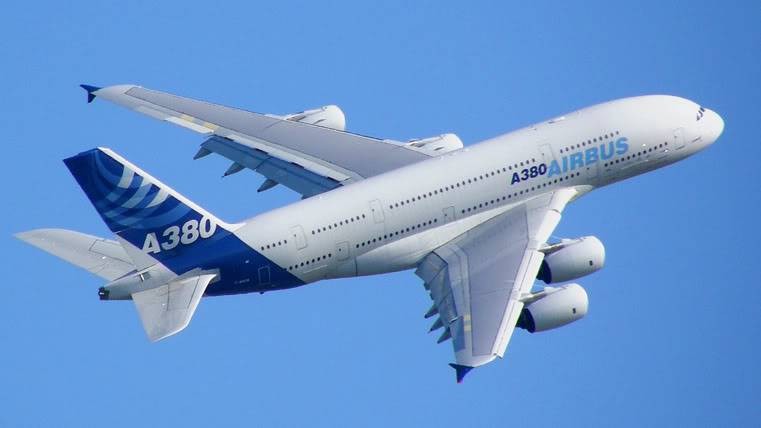

I was gonna put cessna at 1927 where it was wondered but i thought i'l put it here instead:
The company traces its history to June 1911, when Clyde Cessna, a farmer in Rago, Kansas, built a wood-and-fabric plane and became the first person to build and fly an aircraft between the Mississippi River and the Rocky Mountains.
In 1924, Cessna partnered with Lloyd C. Stearman and Walter H. Beech to form the Travel Air Manufacturing Co., Inc., a biplane manufacturing firm, in Wichita. In 1927 he left Travel Air to form his own company, the "Cessna Aircraft Company", to build monoplanes.
Cessna Aircraft Company closed its doors from 1932–1934 due to the state of the economy. In 1934, Dwane Wallace, with the help of his brother Dwight, took control of the company and began the process of building it into a global success.
After World War II, Cessna created the 170, which, along with later models (notably the 172), became the most widely produced light aircraft in history. Cessna's advertising boasts that its aircraft have trained more pilots than those of any other company.
The company traces its history to June 1911, when Clyde Cessna, a farmer in Rago, Kansas, built a wood-and-fabric plane and became the first person to build and fly an aircraft between the Mississippi River and the Rocky Mountains.
Clyde Cessna started his aircraft ventures in Enid, Oklahoma testing many of his early planes on the salt flats. When bankers in Enid would not loan him the money to build his planes, he moved to Wichita.[1]
In 1924, Cessna partnered with Lloyd C. Stearman and Walter H. Beech to form the Travel Air Manufacturing Co., Inc., a biplane manufacturing firm, in Wichita. In 1927 he left Travel Air to form his own company, the "Cessna Aircraft Company", to build monoplanes.
Cessna Aircraft Company closed its doors from 1932–1934 due to the state of the economy. In 1934, Dwane Wallace, with the help of his brother Dwight, took control of the company and began the process of building it into a global success.
After World War II, Cessna created the 170, which, along with later models (notably the 172), became the most widely produced light aircraft in history. Cessna's advertising boasts that its aircraft have trained more pilots than those of any other company.

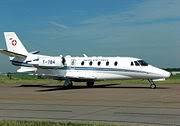
The Boeing 787 Dreamliner is a mid-sized, wide-body, twin engine jet airliner currently in production by Boeing Commercial Airplanes and scheduled to enter service in November 2008. It will carry between 210 and 330 passengers depending on variant and seating configuration. Boeing has stated that it will be more fuel-efficient than earlier Boeing airliners. It will also be the first major airliner to use composite material for most of its construction.
Until January 28, 2005, the 787 was known by the developmental designator 7E7. Early released concept images depicted a radical design with highly curved surfaces. On April 26, 2005, a year after the launch of the program, the final look of the external 787 design was frozen, with a less rakish nose and a more conventional tail. Boeing featured its first 787 in a roll out ceremony on July 8, 2007 at its assembly factory in Everett, Washington. The first test flights are not on a fixed schedule but are expected in the second quarter of 2008 after having been planned to start earlier.
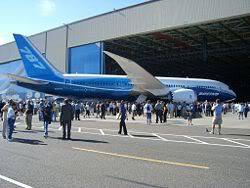
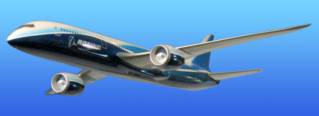
I will add more history when i find out more.
So please enjoy & all comments welcome
Last edited by Morris (morris91) on Mon Oct 29, 2007 3:42 pm, edited 9 times in total
 32 Answers
32 Answers
Very concise and understandable summary of the aviation history. Great job Morris! 👏
Great job Morris 😀 Maybe the Gloster E28 or A380 could fit in ❓
I'v updated it with the:
Spitfire
P51
E28
Comet
TU144
BlackBird
Airbus A340-600
Airbus A380-800
And i have now entered all the years to where i missed them last time.
If anyone has any other plane thay want on this timeline by all means post the link and il put it in.
well done sir!
if i might make a humble suggestion, while some may consider it rather "pedestrian" and "ho-hum" no one can deny the impact cessna has had on general aviation. also, a mention of the dc-3 which has the longest service history of any aircraft ever. these planes, while not exciting like the mustang or the 380 certainly had a significant impact on aviation history.
Definately the DC-3 or maybe you could put it in as the DC-1 😉 Also the 707, it was the jet aircraft that really revoloutionised jet travel, not so much the Comet, mainly because the Comet was a bit of a disaster at the start 😉
wow good work bud. Very interesting, how the aviation began and everyything........... Good work man !
Thanks Guys
Umm... i'v updated it again with:
Dc3
C47
Cessna
Boeing 707
Any more just to be put on the timeline please tell!!!
Nice work chris. Really enjoyed the read 🙂
Excellent work. I particularly enjoyed the Wright Brothers image - one of the most hauntingly beautiful aviation images ever.
I'd add - the beginning of Concorde (I know you mentioned it, but there's a lot more to it than that crash. The crash was the end of a dream, really, but the first flight was the beginning); and also the Tenerife air crash - the worst in history - in 1977.
Yes, the Tenerife crash was important. The 777 maybe, being the first completely computer designed aircraft ❓
Ok then i'v updated it once again. I love updated i love reading all this new info about all these great planes so please keep it comeing. 😀
Updated with:
Concorde Introduction
Tenerife Crash
Boeing 777
Boeing 787
Airbus Introduction
Happy Reading 
Damn, I can't think of any other planes 😳 Oh wait, now I got one. What about all the flying boats like the Shorts Sandringham and Boeing 318 Clipper, I'll try to keep thinking 😳

my 2 cents...
Hughes Spruce Goose....
F-14 Tomcat
Harrier
Avro Vulcan
B2 SPirit bomber...
Top Gun fighter weapons school
737 most popular commercial plane in production...
F4U corsair... what helped win the war in the pacific.
The Red Baron!!!
Nazi Me262 one of the first if not THE first real jet.
Spirit of St Louis!!! How could you forget that! That was important too.
the Valkyrie...
Enola Gay (the bomber that ended the war)
The Tuskeegee Airmen... famous black american squadron. WWII (They flew mustangs)
http://en.wikipedia.org/wiki/Tuskegee_Airmen
That's all i can think of for now...
There you go belgeode there thay all are:
You know i can't beleave i left out the The Tuskeegee Airmen i have the film on them.
i watch it all the time i just can;t beleave i forgot about them abyway there all there exept one 1 that was the Valkyrie when i searched it it came up with some play so i never put it on if that me mistaking please tell me the link and il put it on.
When i get home i will send to you, unless someone beats me to it.
➡ http://en.wikipedia.org/wiki/XB-70
Last edited by Cheeks on Mon Oct 29, 2007 11:31 pm, edited 1 time in total
Hey cheeks the second link never worked for me and why have you put the Tuskegee Airmen link there bel had already put it on this post he did the other day and its on the time line already
Try the XB-70 link now, it works for me 😉
Yep it work's now wonder why id did'nt before 
But at the moment im doing something some repainting (707, 727) lol i will stick it on the timeline tomorrow morning for me i fink thats around 2:00am or 3:00am for you depends on where you live really dont it i know you live in america somewhere
😂 Glad it works. Yeah, its early 
 I live in Seattle
I live in Seattle
I'm gonna change my sig to a Huey, my dad flew them in the 'Nam War. look out for it and tell me what you think 😉
See it, what do you think 😉
Yer it looks cool i love that heli il add that tomorrw aswell then
That and the Cobra, AH-1 😉
I agree with Cheeks... the Cobra is a fine chopper that helped revolutionize the role of choppers as attack craft.... same for the Apache (AH-64) and the A-129 Mangusta.
Speaking of choppers... how bout the Chinook (CH-47) or the popular Robinson R-22, which a lot of private helo pilots in Pittsburgh (and more than likely the world) learn on.
Bell of course would win hands down for most popular helos.
I agree with all of them but the A-129, I know what it is, but not exactly a revolutionary aircraft IMO 😉 I think THIS should go in
➡ http://en.wikipedia.org/wiki/AH-56_Cheyenne
Hell of a chopper, shame not into service 😞
you're aviation timeline is really coming along nicely!
good call on including tuskeegee guys. their record is pretty darn awesome.
the huey sig pic is pretty cool, i got a nice flight model for FS9 from hovercontrol that i fly almost daily. i was never much of a rotorcraft guy but the huey is what hooked me. when i saw the vid you posted of the cheyanne, it reminded me of seeing this video, which i found there (h/c) last night. i post it soley for your
enjoyment.
It looks like seahawk on steroids 😳, but sure is fast! 🙂
Hey, Seahawks are cool, also the NFL team the Saehawks, my hometeam.
GO SEATTLE!! 😀 What about the Piasecki Flying Banana ❓ Back to aircraft for me, enough choppers. Can't forget the Bell 206 either
➡ http://en.wikipedia.org/wiki/Piasecki_H-21
➡ http://en.wikipedia.org/wiki/Bell_206
cheezyflier wrote:
you're aviation timeline is really coming along nicely!
good call on including tuskeegee guys. their record is pretty darn awesome.the huey sig pic is pretty cool, i got a nice flight model for FS9 from hovercontrol that i fly almost daily. i was never much of a rotorcraft guy but the huey is what hooked me. when i saw the vid you posted of the cheyanne, it reminded me of seeing this video, which i found there (h/c) last night. i post it soley for your
enjoyment.
About the Huey pic, the reason I put it as my signature was because my dad flew them in 'Nam, usually the 'Slick' but sometimes the 'Gunship'. He also rarely flew the AH-1.
the timeline is a fun thing to come in and look at when i know there's been an update to it. if you continue to add to it, i bet this thread will have along life.
I guess this post is now closed !!! 😞
If you want it to carry on i will, i forgot about all the heli's 😂
I had a lot going on when starting this (Just beginning to work 😞 )
I will update later i do hope to carry this post on see if we can get the comments upto 100 😂
But also im glad everyone loved it 😀
i vote in favor of continuing. i thought it is a very intersting thread, and there may be folks here who could actually learn some stuff.
(besides me i mean) hahaha
Still does not answer your question? Ask a new question!
If the question and answers provided above do not answer your specific question - why not ask a new question of your own? Our community and flight simulator experts will provided a dedicated and unique answer to your flight sim question. And, you don't even need to register to post your question!
Search our questions and answers...
Be sure to search for your question from existing posted questions before asking a new question as your question may already exist from another user. If you're sure your question is unique and hasn't been asked before, consider asking a new question.
Related Questions
Flight Sim Questions that are closely related to this...


 Jump to latest
Jump to latest



